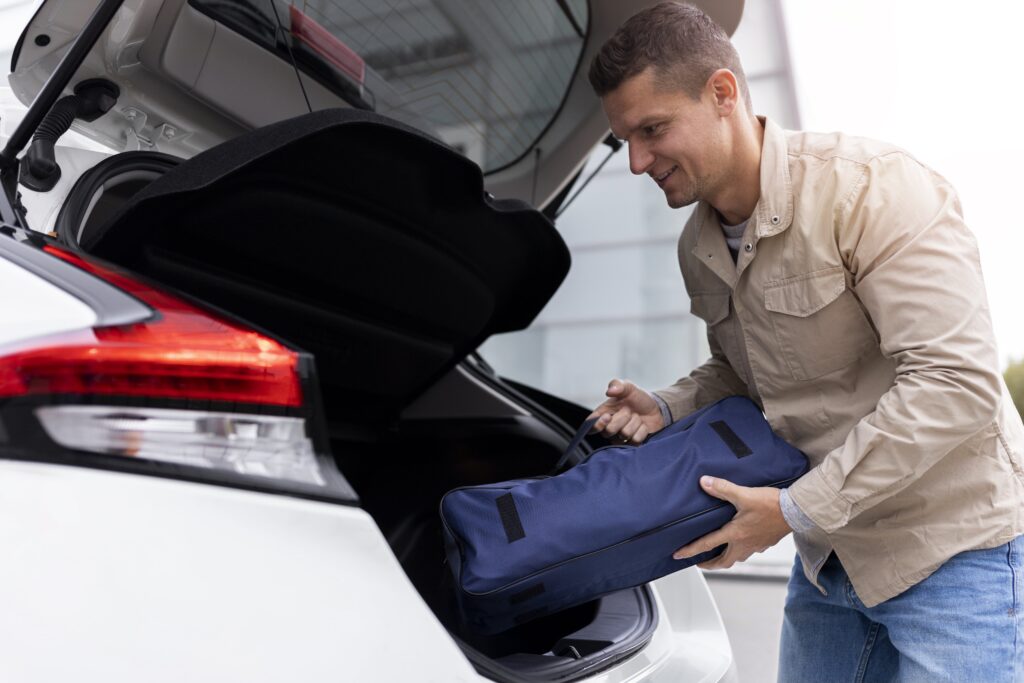Road trips are an exciting way to explore new destinations and create unforgettable memories. However, the success of your journey largely depends on your car’s readiness. As someone who has experienced the frustration of unexpected breakdowns, I’ve learned the hard way that preparing your car for a road trip is essential. From fluid checks to ensuring overall vehicle safety, taking the time to prepare can save you from potential headaches and costly repairs.
Here’s my firsthand guide to getting your car road-trip-ready, covering everything from basic maintenance to important fluid checks.
1. Start with a Comprehensive Inspection
Before diving into the details, give your car a thorough inspection. This includes checking the tires, brakes, lights, and wiper blades. I once neglected this step, only to discover a worn-out windshield wiper mid-storm—lesson learned! Look for obvious wear and tear and address any issues before hitting the road.
2. Don’t Skip the Essential Fluid Checks
Fluids are the lifeblood of your vehicle. Ensuring they’re at the correct levels and in good condition can prevent breakdowns and extend your car’s life. Here are the critical fluids to check:
Engine Oil
Start by checking your engine oil. A quick dipstick check can reveal if the oil level is low or if it’s time for an oil change. If the oil is dark or gritty, it’s time to replace it. Fresh oil ensures your engine runs smoothly, especially on long trips.
Coolant
Your car’s cooling system works overtime on a road trip, especially in hot weather. Check the coolant level and top it off if needed. A lack of coolant can lead to overheating, something I experienced once on a summer road trip—trust me, it’s not worth the risk.
Brake Fluid
Brake fluid is essential for safety. Ensure it’s at the recommended level and hasn’t turned dark or dirty. If it has, have it flushed and replaced before hitting the road.
Transmission Fluid
While often overlooked, transmission fluid is critical for smooth gear shifting. If you’re unsure how to check or replace it, consult your car manual or a professional mechanic.
Windshield Washer Fluid
A clean windshield is vital for visibility. Fill up your windshield washer reservoir and consider adding a cleaning solution designed for bug and grime removal—perfect for long highway drives.
Power Steering Fluid
If your car feels difficult to steer, it might be due to low power steering fluid. Ensure it’s at the correct level and free of contaminants.
3. Check Your Tires
Tires are your car’s only contact with the road, so their condition is paramount. Here’s what to focus on:
- Tire Pressure: Check the tire pressure and adjust it to the manufacturer’s recommended level. Properly inflated tires improve fuel efficiency and handling.
- Tread Depth: Ensure your tires have sufficient tread depth to handle wet or slippery roads. If the tread is worn down, consider replacing them before your trip.
- Spare Tire: Don’t forget to check your spare tire’s condition and pressure. It’s your backup plan in case of a flat.
4. Inspect the Battery
A dead battery can quickly ruin your trip. Check the battery terminals for corrosion and ensure they’re tightly connected. If your battery is over three years old, have it tested to ensure it can hold a charge. I once ignored this step, thinking my battery was fine, only to end up stranded at a remote gas station.
5. Test Your Brakes
Brakes are critical for safety, especially on hilly or mountainous terrain. Listen for squeaking or grinding sounds and pay attention to how the brakes feel when you press the pedal. If anything seems off, have them inspected by a mechanic.
6. Pack an Emergency Kit
Even with the best preparation, unexpected situations can arise. Pack an emergency kit with essentials like:
- Jumper cables
- A tire repair kit or portable air compressor
- Flashlights and extra batteries
- A first aid kit
- Non-perishable snacks and water
- Roadside assistance contact information
7. Top Off Your Gas Tank
This might seem obvious, but starting your journey with a full tank of gas ensures you can reach the next station without worry. If you’re traveling through remote areas, plan your fuel stops ahead of time.
8. Keep Your Documents Handy
Before you leave, double-check that you have your driver’s license, vehicle registration, and insurance documents. It’s also a good idea to have a roadside assistance membership card if you have one.
My Personal Road Trip Preparation Routine
Before every road trip, I follow a checklist similar to this. During my last trip, I added a step to schedule a mobile oil change service at home before departure. It saved me a trip to the mechanic and ensured my car was ready to handle the long drive.
By dedicating just a few hours to preparation, I’ve avoided breakdowns and enjoyed smooth, worry-free road trips. The time spent upfront is worth it, especially when you’re cruising down the highway with peace of mind.
Conclusion
Road trips are all about freedom and adventure, but that doesn’t mean you should leave your car’s readiness to chance. By focusing on fluid checks and other essential maintenance tasks, you can ensure a safe and enjoyable journey.
Whether you’re exploring nearby destinations or embarking on a cross-country adventure, take the time to prepare your car for a road trip. Your future self—and your passengers—will thank you when you arrive safely and stress-free at your destination.




